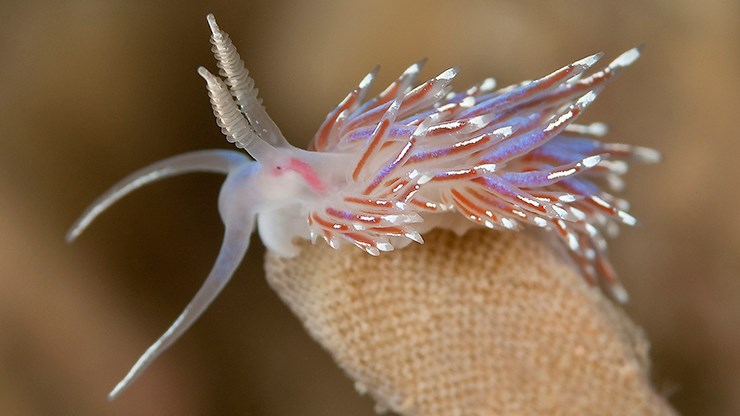The invertebrate collection

Invertebrates include all animal groups that do not belong to the vertebrates, i.e. they have no backbone. There are almost 10 million specimens of invertebrates from different groups in the museum's collections. They are mostly kept in liquid preservatives, but there are also large collections of dried specimens, mainly insects.
Jägerskiöld's marine collection
From 1921 to 1939, the former museum director L.A. Jägerskiöld carried out an survey of the benthic macro fauna - animals larger than 2 mm - that lived on the west coast of Sweden. The collections contain 34,000 items of 1,500 Swedish species taken from 450 localities from Svinesund in the north to Kullaberg in the south, from shallow coastal areas to the depths of the Skagerrak.
This is a unique collection - the only old comprehensive survey from the whole of the west coast. It shows the species composition of the Swedish west coast before intensive bottom trawling, pollution and eutrophication changed the sea. The collection is a long-term study of the benthic biodiversity and a reference bank for research and conservation.
Newer marine collections
The museum houses collections of benthic invertebrates from environmental monitoring programmes on the Swedish west coast from the 1970s to the 1990s. There are also collections from surveys of the biodiversity of invertebrates on the Swedish west coast from the 2000's to the 2010s, initiated by the Swedish Species Taxonomy Initiative, the Swedish Environmental Protection Agency and the County Administrative Board.
Parasitic worms
The museum has Sweden's largest collection of parasitic worms, such as trematodes, tapeworms and hookworms, as well as groups of parasitic nematodes. The total is around 30,000 items, but each item may include many individuals. The main body of the collection consists of the former museum directors Nybelin’s (specialist in tapeworms, haptor worms, trematodes) and Jägerskiöld’s (specialist in nematodes) collections. This collection is of international interest for researchers of parasites, but also for researchers in ecology and systematics.
The mollusc collection
Molluscs include snails, gestropods, bivalves, cepholopods, mussels and minor groups. The museum's mollusc collection is very large, consisting of around 350,000 samples. Most of them are terrestrial and freshwater molluscs. Among the land molluscs, the national material was collected during the terrestrial research programme, which had a unique range and scope. Similar materials of lesser scope also exist in Norway and Denmark.
The collection also includes small and large freshwater mussels from Sweden. There is a large number of samples of terrestrial molluscs from other parts of the West Palaearctic and Atlantic islands. In addition to the dry collection there are also alcohol specimens. This material includes a large number of samples spread by cultural transmission, in particular Iberian slugs. This part of the collection is growing every year.
The Westerlund collection
A large part of the mollusc collection is the Westerlund collection. It includes terrestrial and freshwater molluscs from the entire West Palaearctic region. The material was assembled by the Swedish mollusc researcher Carl Aagard Westerlund (1831-1908), a major name in malacology. The collection forms the basis of his work “Fauna der in der paläarctischen Region (Europe, Caucasus, Siberia, Turan, Persia, Kurdistan, Armenia, Mesopotamia, Kleinasia, Syria, Arabia, Egypt, Tripolis, Tunisia, Algeria und Marocco) lebenden Binnenconchylien” in 7 volumes.
The collection is important for taxonomic and nomenclature work related to the West Palaearctic terrestrial and freshwater mollusc fauna. It is often used by researchers. The material has not yet been digitally stored, but there is a registry of identified type materials.
Contacts the invertebrate collection
Kennet Lundin, parasitic worms and marine invertebrates
Phone: +46 (0)10-441 42 45
E-mail: kennet.lundin@vgregion.se
Charlotte Jonsson, insects
Phone: +46 (0)10-441 42 58
E-mail: charlotte.g.jonsson@vgregion.se
Ted von Proschwitz, land and freshwater molluscs
Phone: +46 (0)10-441 42 44
E-mail: ted.v.proschwitz@vgregion.se






